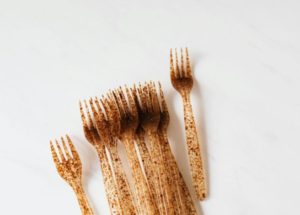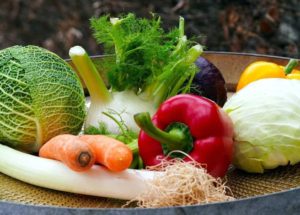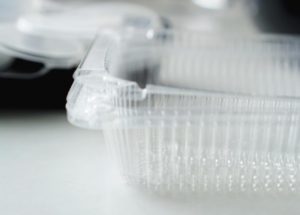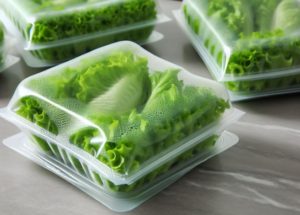May 01, 2025
Why Your Food Business Can’t Afford to Stay Wrapped in Paper
At a Glance Choosing between plastic or paper means weighing cost, performance, and sustainability trade-offs — paper is often pricier and less protective for fresh foods. Plastic offers superior barrier protection, reducing spoilage and food waste compared to paper wraps. Paper may lead to higher packaging and handling costs, and often lacks moisture resistance. Hybrid […]
Read More +
Apr 28, 2025
Warning Signs When Selecting A Food Packaging Supplier
At a Glance Packaging supplier warning signs include missing certifications, poor quality control, and resistance to audits, all of which signal misaligned priorities. Lack of traceability and inconsistent product quality across lots can lead to costly recalls or production delays. Unresponsive customer service or unclear ownership structure often means you won’t get support when issues […]
Read More +
Apr 24, 2025
The Bioplastics Gamble: Why Food Companies Need to Think Twice
At a Glance Bioplastics in food packaging seem eco-friendly, but they often need special composting facilities and don’t always meet shelf-life or performance needs. Conversion challenges exist, including cost premiums, supply uncertainty, and uncertain end-of-life effectiveness. Some bioplastics still rely on food crops, raising sustainability and ethical concerns. Brands benefit by fully vetting bioplastic claims, […]
Read More +
Apr 21, 2025
Find Out Why Some Foods Degrade Faster Than Others in Packaging
At a Glance Foods degrade faster based on packaging interaction — moisture, oxygen, and light exposure directly influence spoilage rates. Product-specific traits (pH, water activity, enzyme levels) dictate how quickly fresher foods break down. Tailored packaging solutions — like barrier films and MAP — help slow degradation for sensitive foods. Storage conditions matter: temperature, humidity, […]
Read More +
Apr 17, 2025
Microplastics and Food Packaging: Separating Fact from Fiction
At a Glance The amount of microplastics in packaging that sheds into food is very low, with most migration coming from environmental sources instead. Most microplastic concerns stem from broader pollution, like washing synthetic clothes or tire abrasion, not packaged foods. Material choice and design matter: smoother surfaces and high-quality films reduce potential particle release. […]
Read More +
Apr 14, 2025
How Automation May Be the Key Ingredient to Your Food Business’s Success
At a Glance Consider automation when repetitive tasks or labor bottlenecks start slowing production or inflating costs. It improves consistency and reduces errors, especially in packing, sealing, or labeling lines. Initial investment pays off through lower labor costs, faster output, and better scalability. Support systems — staff training and maintenance — are key to ensure […]
Read More +
Apr 10, 2025
Greenwashing Alert: The Truth About Plastic Food Packaging
At a Glance Greenwashing of plastic food packaging occurs when brands promote eco-friendly claims without real environmental improvements. Misleading terms like “eco,” “green,” or “plant-based” often mask non-recyclable or virgin plastic content. Transparency and third-party verification are essential — things like clear resin codes, PCR content, and certs matter. Real progress requires measurable outcomes, such […]
Read More +
Apr 07, 2025
PET vs. Polypropylene: The Wrong Choice Can Cost You
At a Glance Differences between PET & polypropylene hinge on clarity, barrier strength, and heat resistance — PET is clearer and more rigid, while PP handles heat and chemicals better. PET is best for visibility, making it ideal for display packaging and cold applications. PP is microwave-safe and more flexible, perfect for reheatable or hot-fill […]
Read More +
Apr 03, 2025
Thin Plastic, Big Problems: How Packaging Thickness Can Affect Your Food and Reputation
At a Glance The thickness of plastic packaging affects protection, cost, and environmental impact — thicker films offer better barrier and durability, while thinner materials reduce waste and expense. Underspecifying thickness can cause product damage or reduced shelf life, so balance strength with performance. Optimizing thickness minimizes CO₂ footprint during transport by lowering weight. Testing […]
Read More +
Mar 31, 2025
The Hidden Challenge in Your Fresh Food Packaging: Why Gases Matter
At a Glance Packaged produce breathes — it consumes oxygen and emits CO₂, causing bulging when gas transmission rates and temperatures aren’t managed properly. Proper film permeability matched to the produce’s respiration keeps internal gas levels balanced and avoids package swelling. Temperature control and monitoring during storage and transport are essential to maintain freshness and […]
Read More +










